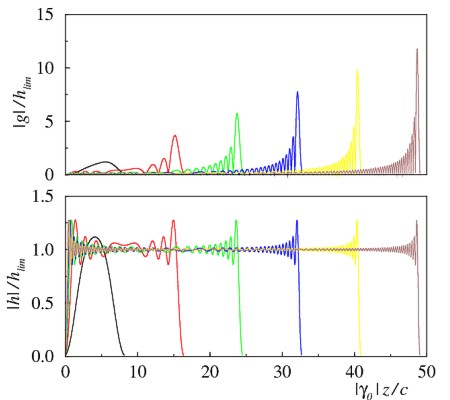 |
|
Raman Scattering and Chirped Pulse Amplification in Plasma
This new type of amplifier presents unique features:
• Plasma, being a broken down medium, can sustain much higher power densities than other amplifying media. Moreover interactions can take place over several cm.
• A chirped pump distributes the gain spatially and provides the bandwidth necessary to either amplify a short pulse or compress a long pulse.
• For a chirped pump pulse or a sufficiently intense seed pulse, the superradiant regime can be accessed which allows for strong amplification and compression of the seed pulse.
Moreover not only the Raman amplification mechanism represents a extremely interesting new scheme to amplify short laser pulses without the need of using a stretcher and a compressor, but it can also have important implications for particle acceleration since it could provide a means of energy replenishment for the main short laser pulse. It could therefore play in a role in the staging of multiple accelerating structures.

Snapshots of amplitudes of probe vector potential
g (top), developing from a short seed, and corresponding density
modulations h (bottom) where g0
is the small-signal growth rate and hlim is the limiting
value of h.
|
Part of the
Scottish Universities
Physics Alliance (SUPA) and the
Department
of Physics, |
